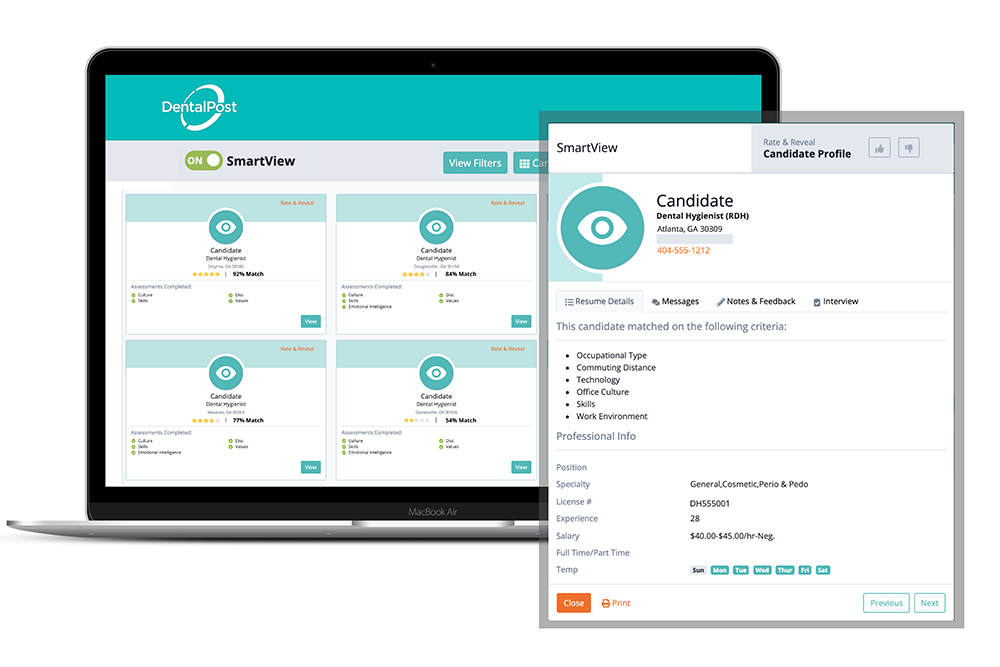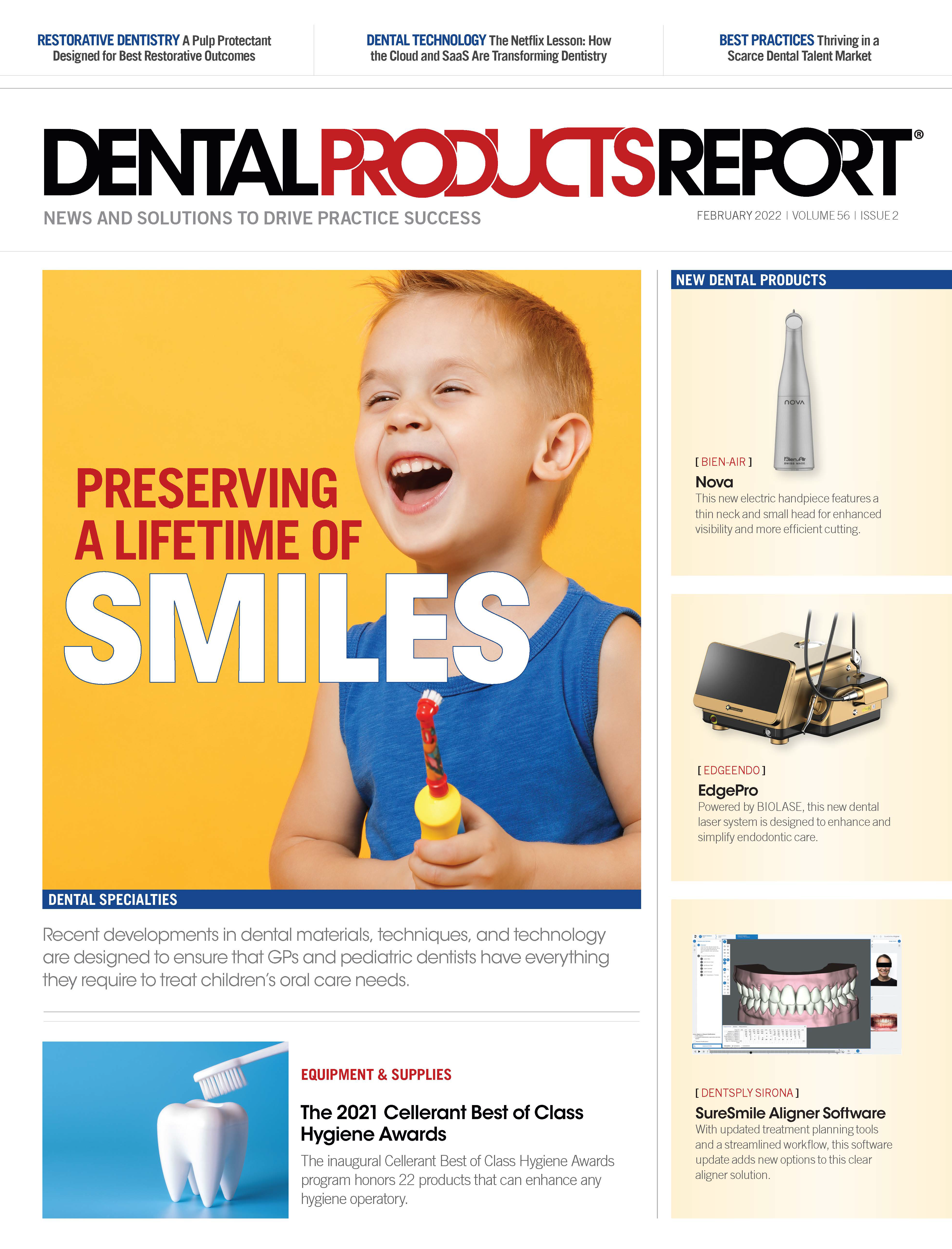Thriving In a Scarce Dental Talent Market
Hiring is the greatest challenge facing our industry and it should be the number one priority for dental practices today.

It’s no secret that hiring is the greatest challenge facing our industry today. Along with dental hiring managers nationwide, we hoped to see an increase in jobseeker activity and more applicants when federal unemployment benefits ended in early September. While we’ve been happy to see an uptick in activity for dental assistant and front office positions, dental hygienists are still largely inactive.
Industry-wide, attracting more dental hygiene applicants is a mystery that everyone is seeking to solve––but its root causes run deep and are the equivalent of a perfect storm for talent scarcity:
- Burnout. It’s real. Hygiene work is highly physical and the new PPO and safety measures, new production schedules and the “make up for lost production and revenue” game is making it harder.
- Fewer graduates. Even before COVID,dental schools weren’t producing enough candidates to meet the growing patient demand of an aging population.
- Early retirement. Many RDHs who worked part-time or who were a few years away from retiring have left the industry.
- Uncertainty. We’re not out of COVID yet and it shows. Our surveys are showing that some dental professionals are being more cautious, and waiting it out to see what happens before leaving what they know and are used to. Even if their current employer isn’t meeting their standards, it feels safer to stay where they are until things feel more settled.
- Industry Disenchantment. Some clinicians don’t see a lateral move as worth it, believing the grass won’t be greener on the other side. If they get a pay bump, many don’t believe much would change for their career.
As for the hygienists and other job seekers who are looking at job postings, we are seeing a lot who are passively browsing to see what is happening out there and where they might find a closer job or career growth opportunity. Some aren’t yet ready to leave the patients and co-workers they care about. Some worry the grassmay not be greener. All-in-all, when they make a move, they want to be strategic about it.
Despite these challenges, there are ways to win in this very competitive market.
5 Things You Can Do Today to Attract & Keep Talent in Today’s Market
So how do you get enough quality candidates, keep them engaged throughout the interview process and, ultimately, have them accept and stick around?
- Engage in both active and passive recruiting. When hiring, employers often default to slapping up a job posting in as many places as we can afford, which is basically a “spray and pray” method. But to be successful, we also need to actively recruit through proactive resume searches and candidate outreach. Doing proactive outreach to a candidate often means you need to have something competitive to offer. If there was ever a time to invest in combination resume subscription and posting packages, it’s now. Successful practices are doing both and it saves time and money in the long run.
- Be competitive. Make the job better. Exceptional people are looking for an exceptional job to get them to leave. What’s a great job? Well, it’s not a laundry list of responsibilities, skills or even must-have personality traits. A great job is one that challenges the person and offers satisfaction and growth beyond just financial compensation. Is there any opportunity in the role for leadership and growth? If not, find some. What aspects of your employee/employer relationship will allow and support both the candidate and the practice growing together?
- Make your office better. Cultivate an attractive and sticky culture.This is one of the top things cited by candidates as reasons for quitting–toxic workplaces. Is your office rooted in respect? Does every supervisor treat team members with respect? Doing so, means team members feel valued and when that happens they tend to stick around longer. Can you improve operations that improve quality of work life and patient experience? Do it! Can you implement core value-driven activities that make working at your practice more purpose-driven? Can you better communicate and give employees buy-in to the business health and growth and not just the practice production?
- Expand your hiring mindset and your candidate pool. Hiring is a whole new game in 2021.We can’t keep doing the same things and expecting a different outcome. Recognizing and being aware of our unconscious bias when it comes to candidate screening is a good place to start. As humans, we make thousands of judgements and decisions a day. Most of it is not anything we’re conscious of. When it comes to people we are far more likely to favor and trust people who are similar or familiar to us. So, it stands to reason that we would have a bias towards hiring them. This goes back to our tribal nature, where familiarity with people and places was critical to our personal safety. We use this same thinking when evaluating candidates to place in our practices to care for patients. And we do it to our detriment because we aren’t focusing on the things that matter—like skills, training, experience and aptitude. To reduce hiring bias in the screening process, DentalPost recently launched Smartview, a new blind screening feature that temporarily hides candidate names and photos so hiring managers can focus first on what matters most–experience, special training and personal details.
- Improve the overall compensation to include benefits. While a toxic work environment is the most cited reason people want to leave their jobs, this one is a close second. It’s more common than not that dental professionals are not provided benefits when working with private dental practices, even when they have been employed for several years with the practice. Combine this with the additional work, more intense work conditions and risks associated with COVID-19 and it stands to reason that dental team members feel they deserve a raise. Given compensation is driving some of the lateral moves in dental hygiene teams, it behooves dental hiring managers to understand current market rates (which have increased due to COVID-19 since the last DentalPost Salary Survey).
Hiring should be the number one priority for dental practices today. It’s the greatest challenge facing our industry and the research shows it will continue to be an issue for the next decade. The great news is that if we take these steps outlined above, we will not only fill team gaps, but we can begin to address some of the more systemic issues plaguing the dental practice today by creating a better practice culture by articulating and living out our core values. If, as dental leaders, we can get these things right, we can keep our industry attracting the best and brightest providing dental professionals a better place to work, a better quality of life so they can provide and a better patient experience.

How Dentists Can Help Patients Navigate Unforeseen Dental Care
December 12th 2024Practices must equip patients with treatment information and discuss potential financing options before unexpected dental treatments become too big of an obstacle and to help them avoid the risk of more costly and invasive procedures in the future.